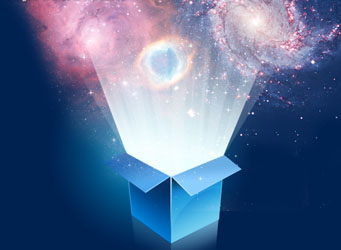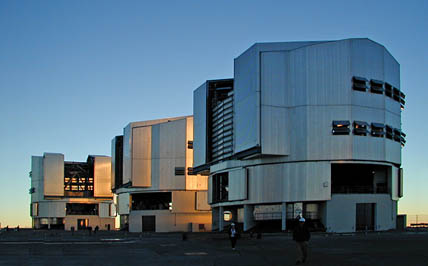When professional astronomers gather around the proverbial water cooler, I'll bet the conversation sometimes turns to all the help they're getting these days from amateurs around the world. It's not just the terrific job you do observing planets, supernovae, and comets; you also help out behind the scenes with image- and data-processing skills.
(As just one example, check out this amazing morphing animation created by Daniel Macháček from just five images from the recent flyby of Comet Hartley 2.)

The European Southern Observatory invites do-it-yourself image dabblers to explore its archives and submit entries in its Hidden Treasures photo contest, which ends November 30th.
ESO
Hoping to tap into all that image-processing prowess, officials at the European Southern Observatory have launched the Hidden Treasures contest to see who can create the most wonderful views of the cosmos from archived imaging data.
ESO's astronomers have amassed a rich trove of gorgeous cosmic vistas over the years, so there's plenty of material to work with. What I especially like about Hidden Treasures is how it empowers those of you who love great astrophotography but might not have the gear and gizmos to do it (or do it well) yourself.
"We normally publish these images ourselves for the public to admire, such as the ESO Top 100," explains outreach specialist Oana Sandu. "However, this time we wanted the public to have the opportunity to process images just like professional astronomers do, and to try to obtain their own amazing views of our universe."
Be forewarned: there's lots of slogging involved in the Hidden Treasures competition. "This is not for the faint-hearted," the contest's website notes. "Many terabytes of data are available, spanning many years, different instruments and technologies. The individual files in the archive are each single exposures, obtained through a single filter. They need to be extensively processed and combined to bring out the beauty hidden in there."
OK, this is way out of my league — but I know many of you can do it!
So why should you?

Picture yourself here! It's sunset, and four giant instruments spring to life at the Very Large Telescope atop Cerro Paranal in Chile. (Three of them, named Antu, Kueyen, and Melipal, are seen here.) Each has a primary mirror 27 feet (8.2 m) across).
S&T: J. Kelly Beatty
For a chance at first prize: an all-expenses-paid trip to ESO's amazing Very Large Telescope atop Cerro Paranal in Chile — including an overnight stay to participate in one of the observing runs!
I visited the VLT in late 2003, and I can attest that it's an amazing place (as is Chile in general). Runner-up prizes include an iPod Touch, laser-engraved glass cubes with a model of the VLT, and Eyes on the Skies book-DVD combos.
The concept is simple. First, you identify and retrieve a data set from the ESO's science archive. Then you combine and process the images in any way you wish (the official rules are here — one taboo: no "painting” allowed). Then save your masterpiece and submit it as a moderate-size JPEG file. You can pool resources with others to enter as a team, and you can enter as many images as you wish.
The deadline for submissions is November 30th at 23:00 Universal Time (that's midnight CEST, 6 p.m. EST, and 3 p.m. PST). Entries will be judged for their aesthetic quality, processing quality, and originality by ESO astronomer Olivier Hainaut and imaging specialists Richard Hook, Davide de Martin, and Lars Lindberg Christensen.
Of course, the devil is in the details. "The competition is challenging," Sandu admits. "Candidates need to be able to master technical skills and to have a creative mind as well." But the website provides full support for accessing the archive and even links to a list of image-processing programs.
So good luck to you and your pixel-picking pluck!
 0
0
Comments
You must be logged in to post a comment.